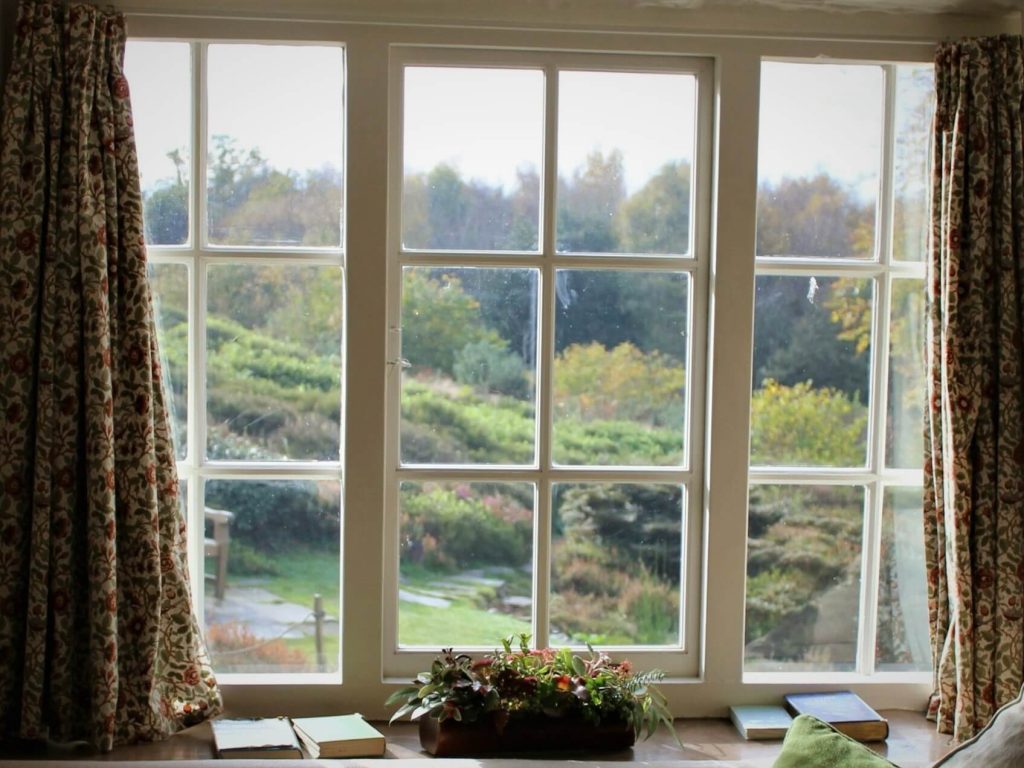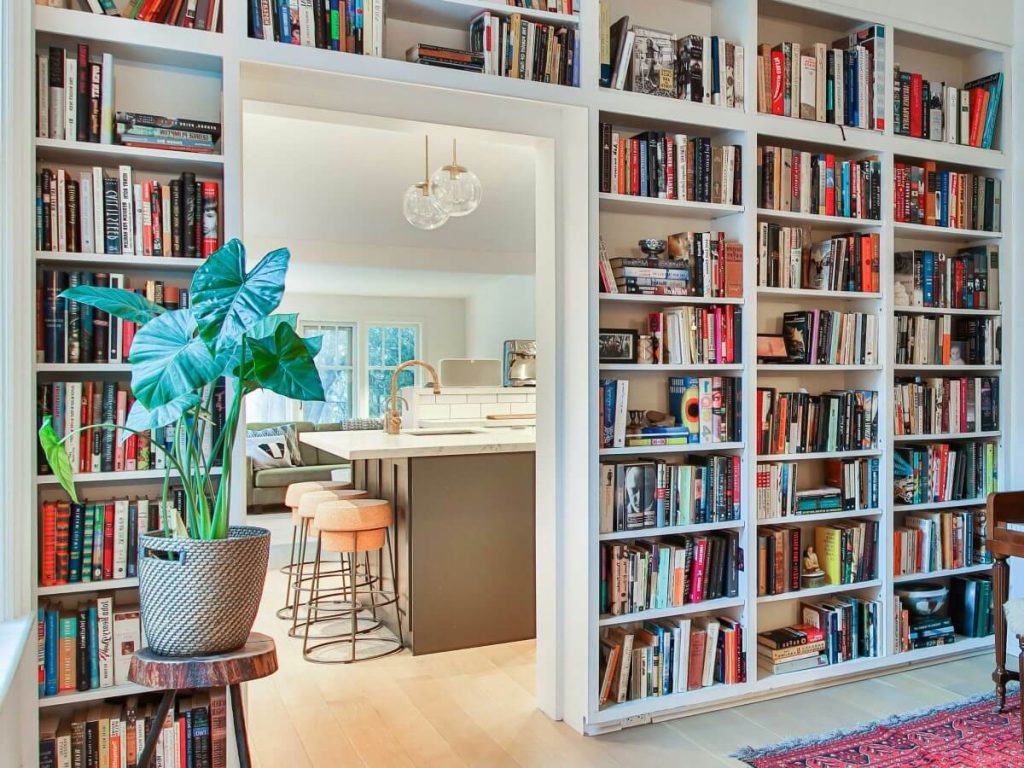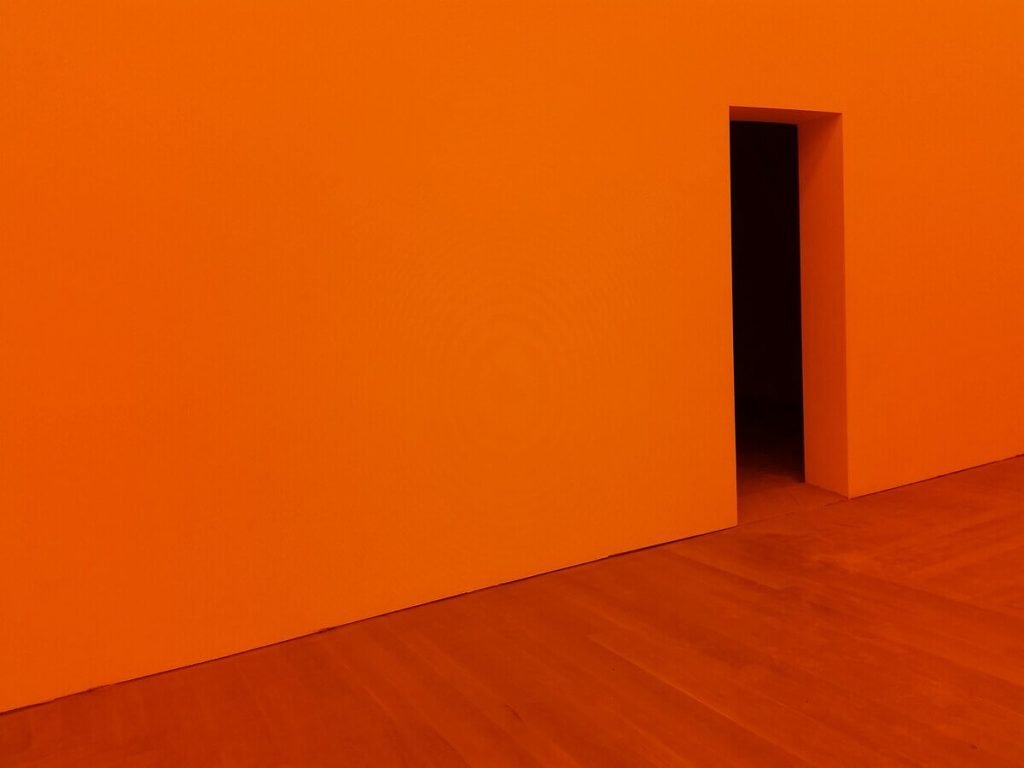TV Size Guidelines: Finding the Right TV Size for Small Room
Learn how to choose the perfect TV size for your small room.

Choosing the right TV size for small room goes beyond the size you want and your budget—it’s about matching the screen size to your room layout, furniture, and how you watch the TV. Below, we break down a short guide to choose the right TV size for you.
Table of Contents
1. TV Size vs. Room Size
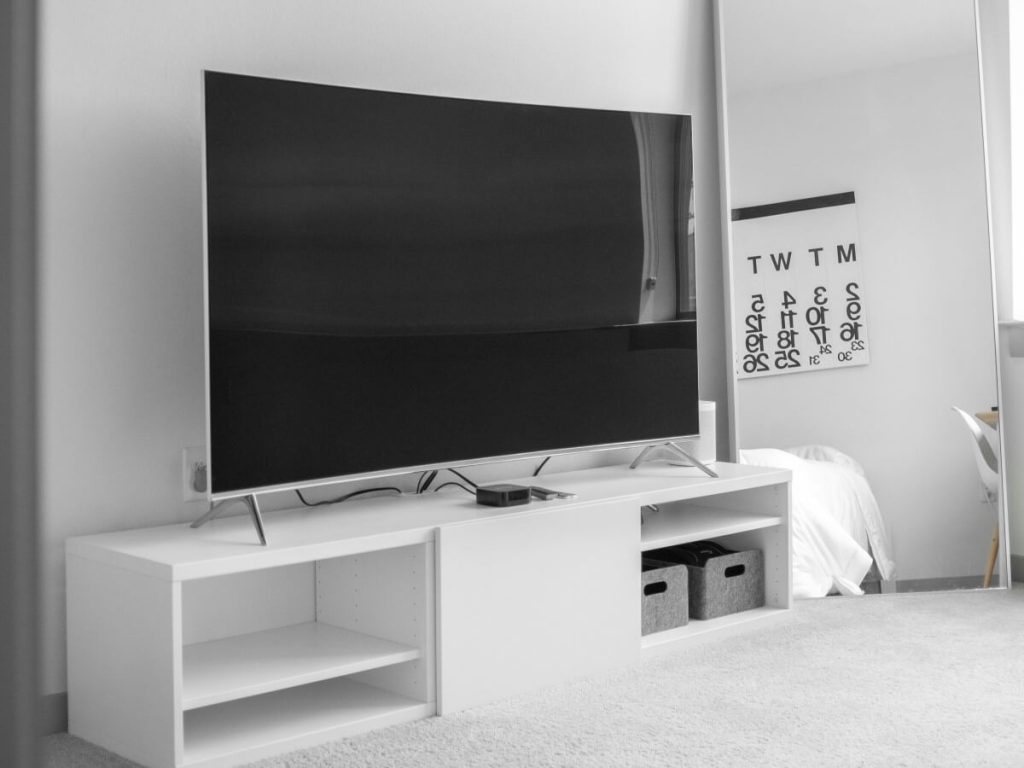
Your room’s total square footage plays a big role in determining the ideal TV size. A screen that’s too large can overwhelm a small room, while a screen that’s too small may not deliver the immersive viewing experience you want.
TV Size Recommendations by Room Size:
- Under 120 sq ft (very small room): 32″–40″
- 120–180 sq ft (small-medium): 43″–50″
- 180–250 sq ft (medium): 50″–55″
- Consider ceiling height: Low ceilings can make large TVs feel more intrusive.
- Factor in furniture layout: A sofa pushed against one wall vs. centered may affect usable wall space.
- Leave 4–6 inches of clearance between the TV and nearby walls or shelves.
2. TV Size vs. Viewing Distance
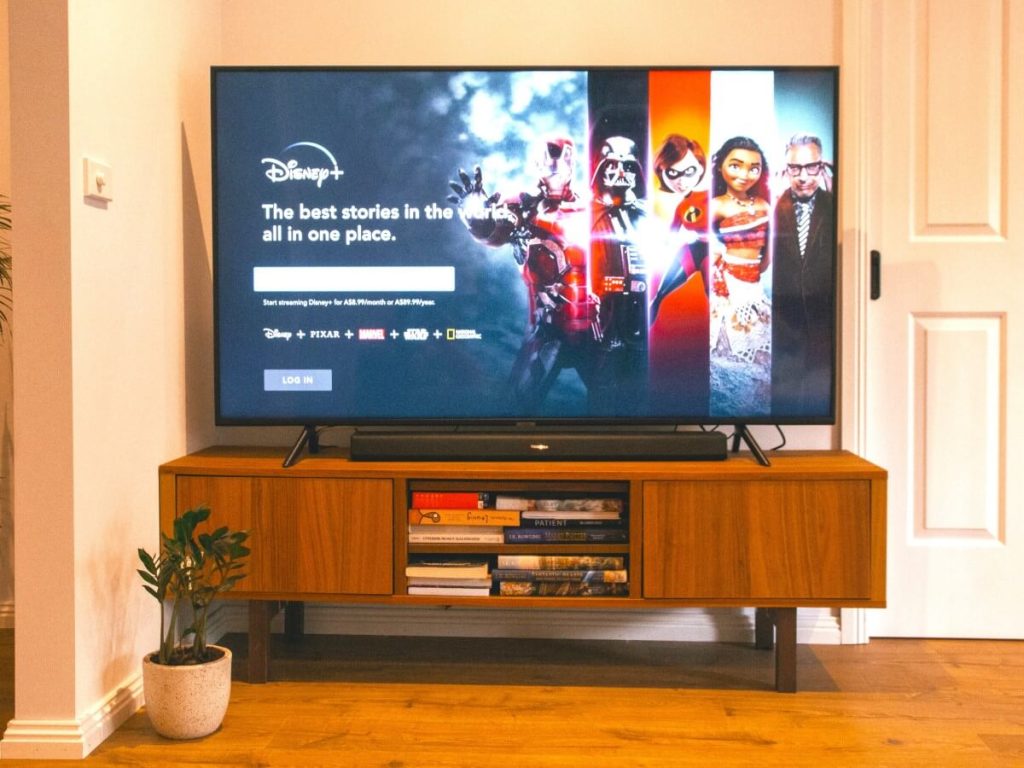
The optimal TV size also depends on how far you’ll be sitting or lying from the screen. This is one of the most important ratios for preventing eye strain and maximizing viewing comfort.
TV Size to Viewing Distance Chart:
- 32″ TV: 4–6.5 ft
- 40″ TV: 5–8.5 ft
- 43″–50″ TV: 6–10 ft
- 55″ TV: 7–11.5 ft
- Use a tape measure from your seating position to the wall or furniture where the TV will go.
- For 4K TVs, you can sit closer without noticing pixels; for 1080p, stay a bit farther back.
- Projectors allow for more flexibility with distance but need more light control.
3. TV Size vs. Wall Space
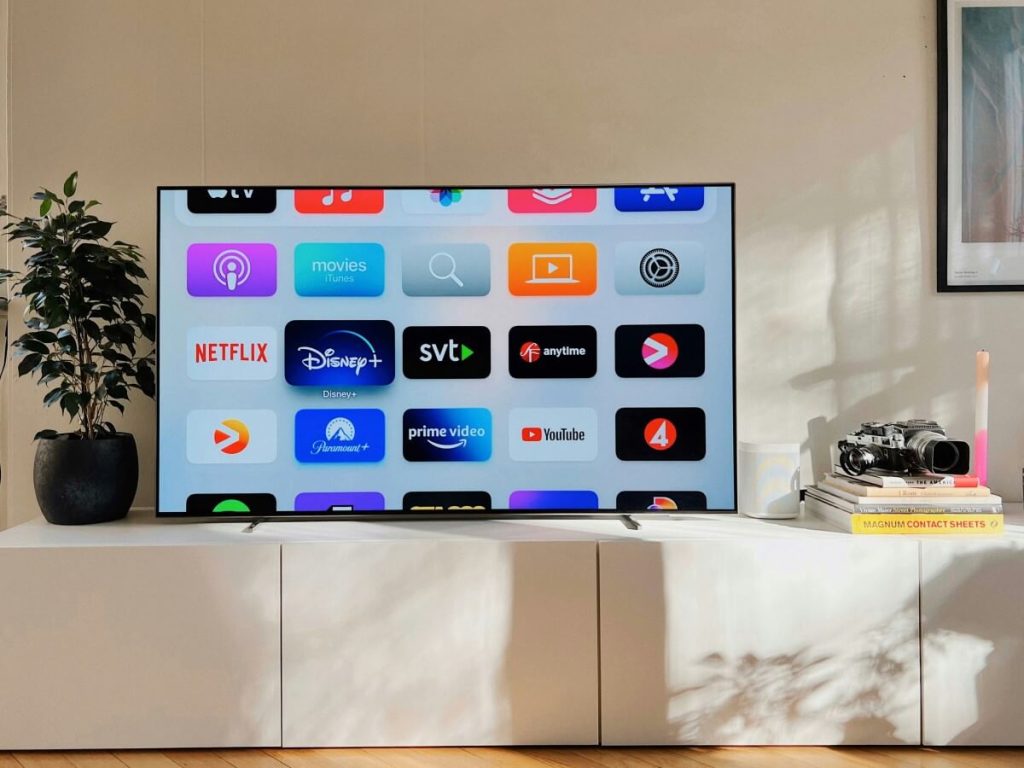
Even if the TV fits your room’s square footage, it should also feel proportionate to the wall it’s on. This avoids that “too tiny” or “way too big” look and keeps the layout balanced.
Rule of Thumb:
- TV width should be about 60–70% of the wall it’s mounted on.
- If you’re placing it above furniture, match the TV width to about 80–90% of the dresser or console.
- Leave 6–8 inches on either side of the TV for breathing room.
- If mounting on a gallery wall or between windows, measure the full span first.
- Offset the TV to one side of the wall only if it’s paired with large art or open shelving.
- TV width should be about ⅔ the width of the wall or the furniture beneath it.
- A 43″ TV works well on a wall that’s 60–70 inches wide.
4. TV Size vs. Mounting Height
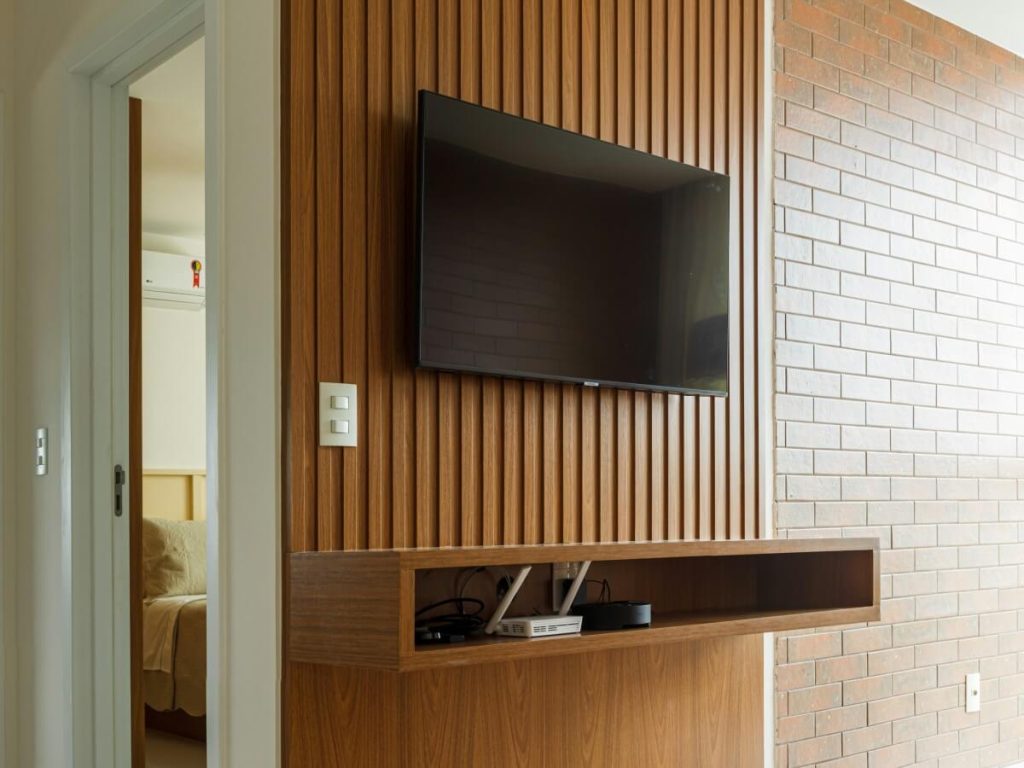
A bigger screen requires more precise placement to keep the center at or near your natural eye level—especially if your sitting position is close to your TV.
Ideal Center Height from Floor:
- 32″–40″ TV: 42–46 inches
- 43″–50″ TV: 44–50 inches
- 55″ TV: 46–52 inches
- Mount the TV about 6–10 inches above the top edge of a console table.
- If mounting above a fireplace or higher wall, always use a tilting bracket to aim the screen downward.
- Factor in pillow height and whether you usually sit up or lie flat while watching.
- Use wall anchors and check sturdy locations before drilling to avoid tilting or falling risks.
- To avoid glare and neck discomfort, the center of the TV should be at or just below your eye level when you’re lying or sitting comfortably.
5. TV Size vs. TV Stand
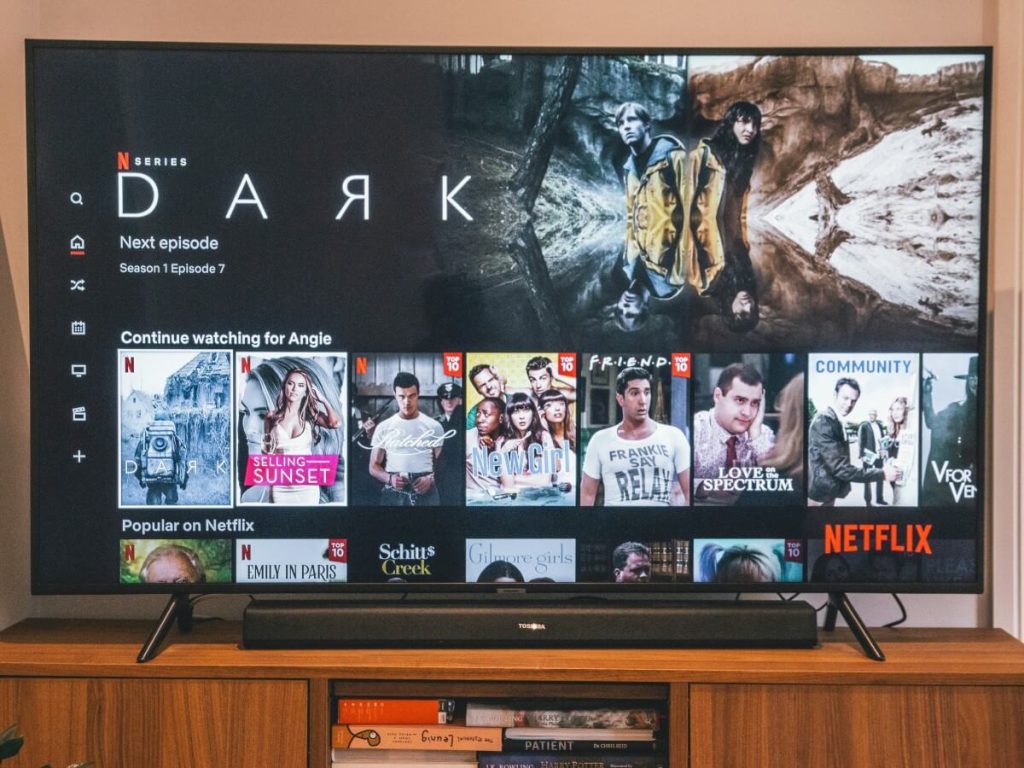
Your TV should never overhang the piece of furniture it rests on. It not only looks awkward—it creates tipping hazards.
Minimum Stand Width by TV Size:
- 32″ TV: at least 30″ stand
- 43″ TV: at least 40″ stand
- 50–55″ TV: at least 48–52″ stand
- Add a couple of inches (2–3 inches) on either side for breathing room.
- If using a narrow tv stand, use adhesive anti-tip straps for safety.
- Always measure the actual width of the TV, not just the diagonal screen size.
6. TV Size vs. Room Decor Style
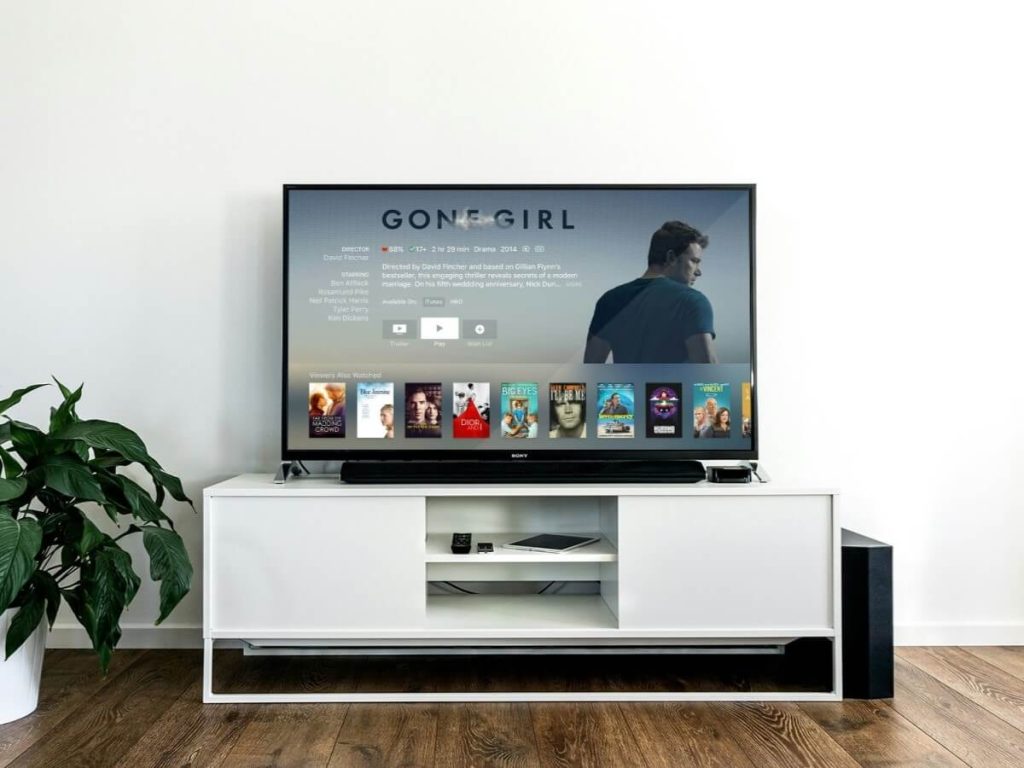
Your personal style should play into your decision. In minimalist room, large black screens can feel stark. In eclectic or cozy styles, an oversized TV can make your room off balance.
TVs by Room Style:
- Minimalist / Scandinavian: 32″–43″, wall-mounted or disguised as art (e.g., Frame TV)
- Modern / Industrial: 50″+, paired with dark tones or metal shelving
- Boho / Vintage: 32″–40″, often hidden in cabinets, armoires, or behind curtains
- Use slim bezels or Frame TVs to soften the look in curated spaces.
- In soft-color rooms (beige, blush, sage), darker TVs can feel too harsh—Choose white or wood-toned frames.
- Match your TV accessories (soundbar, remote, console) to nearby decor.
- Add a gallery wall around your TV to blend it in as part of your decor story.
- Sleek, modern rooms may benefit from a wall-mounted Frame TV, while cozy or traditional spaces may look better with smaller, tucked-away screens.
Final Thoughts: Choosing Your TV Size
When choosing tv size for small room, you want convenience and comfort—but you don’t want your TV too big that it overwhelms your room. You need to find a placement that suitable for your room layout, width, height, and viewing habit. Forcing your way into buying a TV size that doesn’t fit your room will decrease your viewing experience.
FAQs: TV Placement in a Small Room
1. Is it OK to have a TV in a small room?
Yes, with correct placement and the right TV size, a TV can work in even the tiniest rooms without taking over the space.
2. What’s the ideal TV height in a room?
The center of the screen should be about 42–48 inches from the floor—adjust based on your sofa height and viewing position.
3. How can I hide cords from a wall-mounted TV?
Use cord covers, in-wall cable kits, or route them through furniture to maintain a clean look.
4. Should I put a TV at left or right side of the wall?
Only if it doesn’t block pathways or dominate the room. Consider a swivel mount or a cabinet lift if space allows.
5. What size TV is best for a small room?
Between 32″ and 43″ is usually ideal—big enough for comfort, but small enough to not overpower the room.




